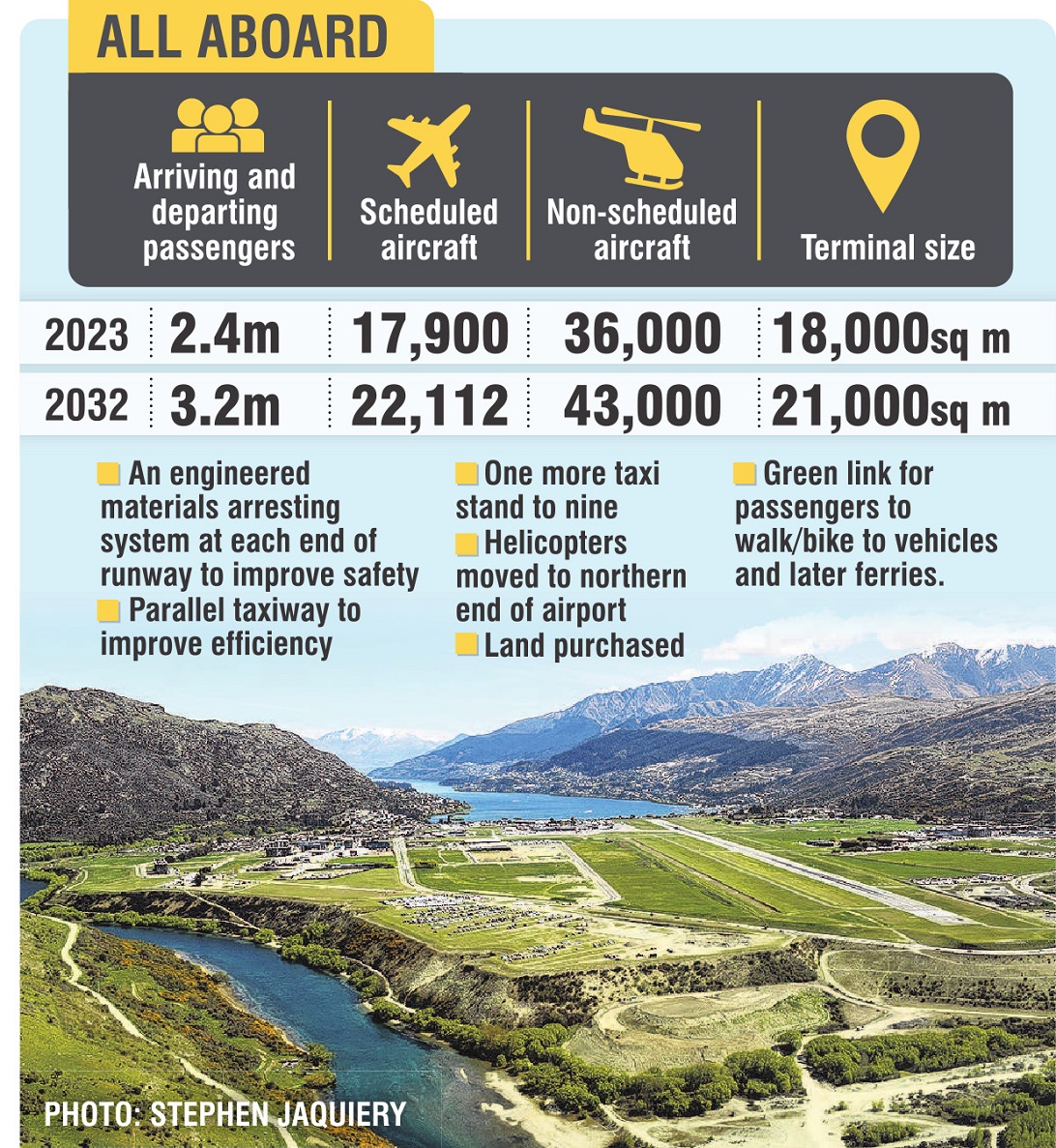Queenstown Airport’s long-awaited draft master plan - which predicts passenger numbers will rise by a third over the next decade - has been released for public consultation.
The plan builds on the 10-year strategic plan, approved last year, and allocates space to provide for options beyond 2032.
The plan included a proposed terminal extension, and prioritisation of active travel and public transport links, including a new "green link" connecting the airport terminal to cycle trails, and a proposed ferry jetty on Lake Wakatipu.
Other key projects included relocating general aviation activities — helicopters would be consolidated north of the runway and fixed-wing aircraft in a new precinct south of it — and constructing a new parallel taxiway to improve efficiency and reduce emissions.
Queenstown Airport Corporation (QAC) board chairwoman Adrienne Young-Cooper said long-term planning was necessary to ensure the airport appropriately considered and invested in infrastructure, to maintain the highest levels of safety, resilience, efficiency and customer service.
"We are on the verge of global changes to the aviation sector as the focus on decarbonisation and innovative technology escalates.
"It is, therefore, important to have a master plan for an airport that is future-ready and continues to contribute to the social and economic wellbeing of the region over the long term."
Airport chief executive Glen Sowry said the plan reflected the Queenstown Lakes District Council-controlled trading organisation’s commitment to operate within its existing air noise boundaries for the next 10 years.

Mr Sowry said Emas were used in many airports around the world and were in place to essentially catch a plane if it overran the runway.
It had been used, internationally, about 40 times without loss of life or aircraft.
Additionally, the draft master plan preserved some space at the airport to allow it to enable sustainable aviation.
Mr Sowry said in preparing the plan, QAC applied core financial and funding principles to ensure it made the best use of its assets, could continue to pay a dividend to shareholders, and managed debt at prudent levels.
Future development would be staged and each step subject to approval by the board, as well as any required shareholder and regulatory approvals, before any capital investment was made.
Public consultation on the plan, available at the airport’s website, closed on June 23 and Mr Sowry encouraged everyone to provide feedback.
Information sessions would also be held around the district over the next month, along with a lunchtime webinar on June 1.







